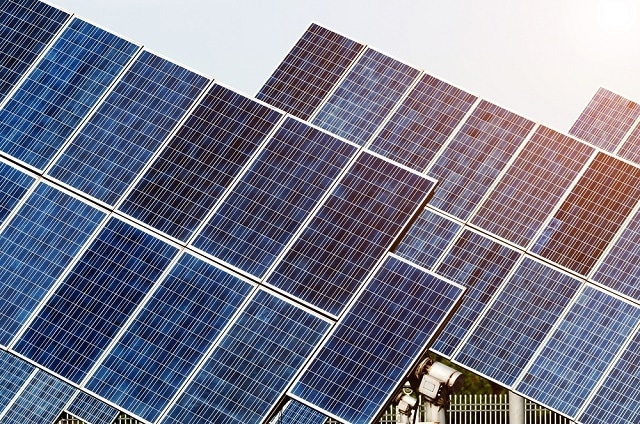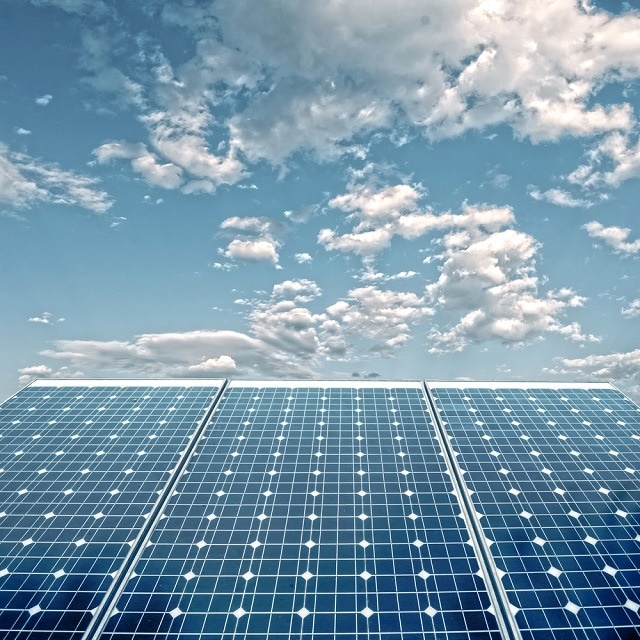
Image Credits: hxdyl/shutterstock.com
Companies and researchers are applying nanomaterials to photovoltaics to lower their manufacturing costs and improve their capabilities. This includes improving their efficiency when converting light into electricity.
Rice University
One research group specializing in this space are from Rice University’s Laboratory for Nanophotonics (LANP) in Houston, TX, where researchers are putting light-capturing nanomaterials into solar cells. The nanomaterials the researchers are using include metallic nanoparticles that convert light into plasmons.
While most photovoltaic cells use rare and expensive elements like gallium and indium, that does not have to be the case. Rice scientists believe one way to lower manufacturing costs would be to incorporate high-efficiency light-gathering plasmonic nanostructures with low-cost semiconductors like metal oxides, so that waves of electrons flow like a fluid across the particles’ surface.
Light on these areas can produce areas of higher energy or ‘hot electrons’. In addition to being less expensive to produce, the plasmonic nanostructures also have optical properties that can be precisely controlled by modifying their shape.
Royal Melbourne Institute of Technology
A team of scientists at the Royal Melbourne Institute of Technology in Melbourne, Australia created "nanocones" with metal shell coatings and a core that is based on a dielectric, meaning a material with superior light absorption properties. The material exploits oscillations that occur as a result of changes in the concentration of electrons when it is struck by photons.
If this type of material was used as part of a traditional thin-film solar cell, the researchers believe it could increase light absorption by up to 15% in both the visible and ultraviolet range without requiring any new fabrication techniques. Also, they suggested that due to the better light absorption properties of the new material, the short circuit current and photoelectric conversion efficiency could be improved.

Image Credits: fuyu liu/shutterstock.com
The researchers also note that unlike other nanostructures the oscillations generated by the nanocones are polarization insensitive, which means they do not have to be directionally perpendicular to nanoslits. This makes them more useful in a wider array of applications because they can be directly integrated into current hardware. They add that they next plan to shift their efforts towards focusing on plasmonics that occur in other sorts of structures with different types of shapes.
DuPoint and Other Companies
Already putting product with nanoparticles into the market are companies such as DuPont, with their Innovalight technology.
The proprietary material is comprised of silicon nanoparticles formulated into a screen printable ink that is compatible with low-cost industry standard screen printers, such as those used for printing metal contacts. The silicon ink printing reduces the solar cell manufacturing cost on a per watt basis. Further, the silicon ink printing can be modified to adapt to a company’s current manufacturing lines.
While DuPont is able to use the nanoparticles now others are in development, such as Bloo Solar that has a modular technology called Solar Brush on which each square meter area contains 33 billion solar “bristles,” each of which measure about the size of a red blood cell. Each of the industrial bristles is an individual solar cell with a conductive core that converts and channels energy efficiently to a conductive backplane. Bloo Solar claims the solar cells produced have a larger surface area with total power output higher than current technologies and minimized recombination.
Other companies exploring nanomaterial inputs for solar cells include EnSol AS, and Solarmer Energy. The former, based in Bergen, Norway, has what is calls fourth generation photovoltaic technology. Its vapor deposition system puts together a high flux nanoparticle source, with thin film magnetron sputter capabilities. On 10 cm by 10 cm substrates it can conduct routine multilayer cell & device fabrication with the addition of nanoparticle, nanocomposite, metal, semiconductor or dielectric materials.
Sources and Further Reading
Disclaimer: The views expressed here are those of the author expressed in their private capacity and do not necessarily represent the views of AZoM.com Limited T/A AZoNetwork the owner and operator of this website. This disclaimer forms part of the Terms and conditions of use of this website.